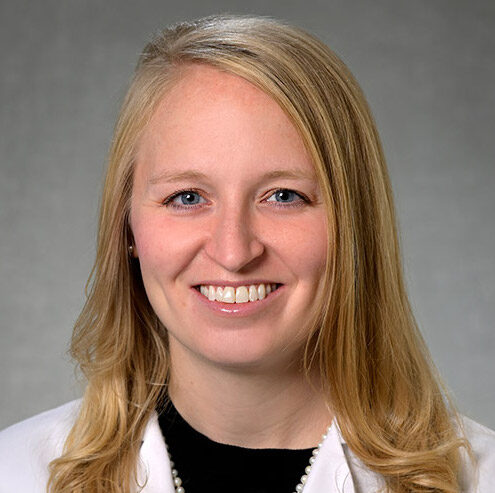As the pandemic drags on, many people are behind on tests health care providers routinely recommend for cancer screening. It is safe and appropriate to resume testing, if you haven’t already.
“I skipped my mammogram last year, I have been putting it off until the pandemic ends.”
“My doctor recommended a colonoscopy, but I’m afraid to be on the hospital campus where there might be people sick with COVID.”
If this sounds familiar, you aren’t alone. And yes, there WAS a time, during the early days of COVID, when tests and procedures deemed non-essential were canceled or put on hold by hospitals. At that point, we didn’t know as much about how COVID spread or what protocols and equipment could protect people from becoming infected. Hospitals also attempted to delay medical care that wasn’t immediately necessary to channel resources to hospital units overrun with patients sick with COVID-19. Not unexpectedly, cancer screening rates declined a lot during this early part of the pandemic. However, studies show that while rates of screenings have improved since 2020 they have not yet recovered to pre-pandemic levels.
With no real end to COVID-19 in sight, we cannot keep delaying these very important screening tests in populations who are at risk for certain cancers. By screening we can often identify cancer earlier – so that means it is smaller, localized to one area and usually much easier to treat.
Several modeling studies have projected that these delays in screening due to COVID may eventually lead to an increase in later stage cancers. A study in the United States projected roughly 950 cumulative excess breast cancer deaths by 2030 related to reduced screening. A modeling study in Canada projected that a three-month interruption in breast cancer screening could increase cases diagnosed at advanced stages (310 more) and cancer deaths (110 more) in 2020-2029, with greater increases for greater delays.
A recent study that looked at rates of breast cancer diagnosed in 2019 vs. 2020 supports this very real concern. Although the total number of cancers diagnosed was about the same in both years, 2020 had a higher proportion of stage IV, or widely spread breast cancer at the time of diagnosis than the 2019 group did.
With those scary numbers in mind, there may be a few questions you have about cancer screening during the pandemic:
🧷 🏥 Is it safe to return to hospitals and health care providers’ offices for routine care?
Yes. You can be confident that health care providers are putting all the necessary precautions in place to keep you safe during a visit to a hospital or clinic. Many health care systems have started requiring vaccination for their employees. In addition, many health care workers must answer symptom screening questions daily and many health systems have intermittent random COVID testing for their staff. As for other patients receiving care, most hospitals have required symptom screenings for incoming patients and family members prior to attending routine health visits and restrict acutely sick patients from non urgent appointments. Most hospitals also continue to require strict masking policies for both patients and staff, even though mask guidelines in non-health care settings have been scaled back.
🤓 Who makes recommendations about cancer screenings? How do they do it?
This can be a little tricky to decipher. Many professional medical organizations make their own recommendations for who should be screened and how they should be screened. These organizations must weigh the benefits of screening (e.g. early detection, often more treatable) against the costs and potential downsides (e.g. false positives). The cost to benefit ratio depends on the screening population, and is generally more favorable in higher risk populations. Different organizations may draw the line differently for where the overall risk to benefit ratio is favorable.
In the United States, screening recommendations are made by groups such as the American Cancer Society, American Medical Association, American College of Obstetrics and Gynecology, American Academy of Family Physicians and others. One large and well trusted independent organization that sets screening guidelines is the U.S. Preventive Services Task Force, known as the USPSTF. This group consists of national experts in prevention whose aim is to provide recommendations for preventive testing based on available scientific evidence. Individual health care providers then have to choose from these sets of recommendations to help you make decisions about your own health care screenings. With many groups weighing in, it can seem really overwhelming… but don’t worry! There is general consensus across all the organizations about the basics of screening for the most common cancers.
🧪 What cancer screening tests are recommended? The answer to this question changes based on your age, sex and heath history. A general set of guidelines in the United States looks like this, and is reasonably consistent internationally, though age cutoffs and frequencies can vary:
✅ Females age 21-65 – cervical cancer screening every 1-5 years
✅ Females age 40-75 – breast cancer screening every 1-2 years
✅ People age 45-75 – colon cancer screening every 1-10 years
✅ Males age 55-70 – discussion with your provider about prostate cancer screening
✅ People age 50-80 with significant smoking history– lung cancer screening yearly
However, what’s recommended for you as an individual can vary greatly based on your own health habits, your family history, and the outcome of your previous screening tests. You should consult with your health care provider about what makes sense for you. Seeing your provider yearly for an annual physical is a fantastic way to make sure you are up to date on appropriate testing and are being proactive about your health 💪🏾!
Love,
Those Nerdy Girls
Additional Resources:


